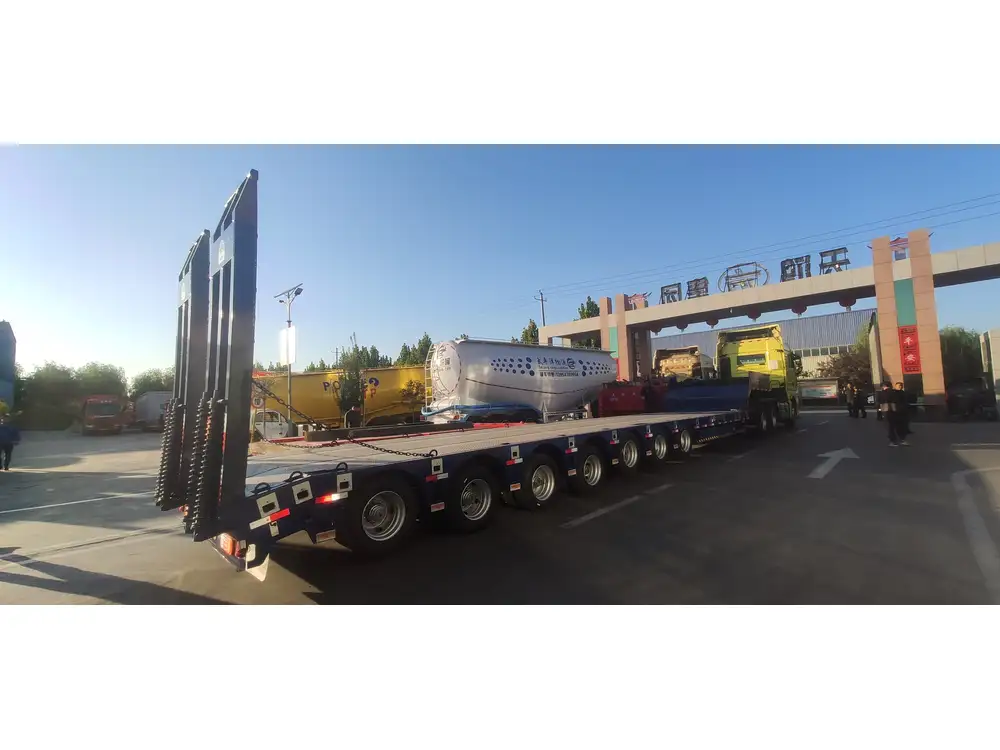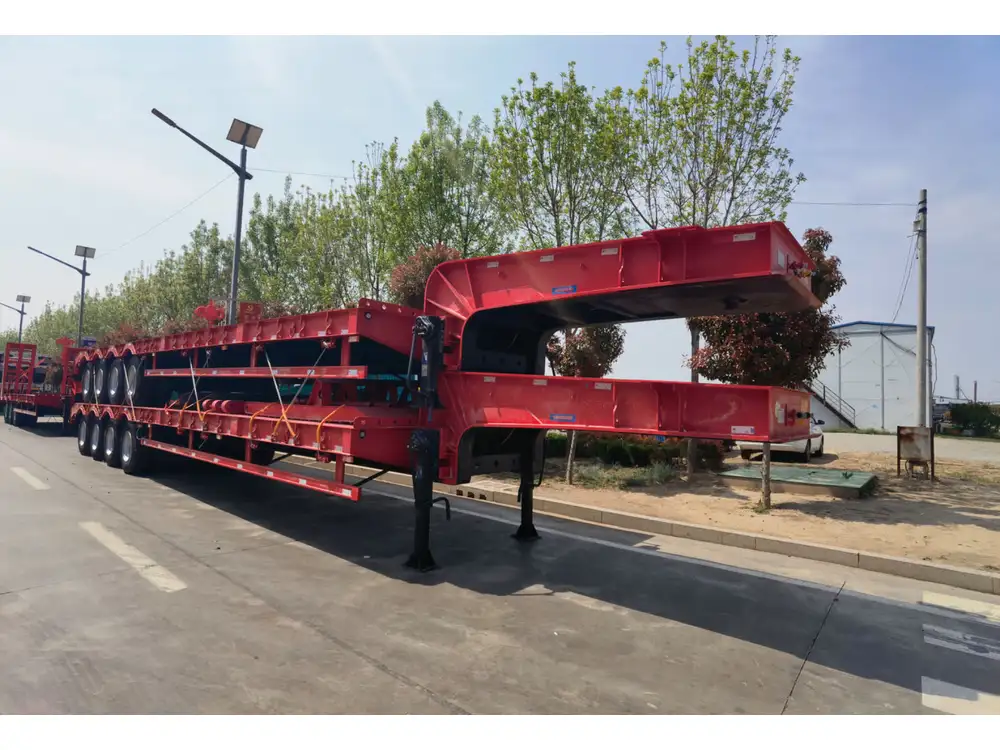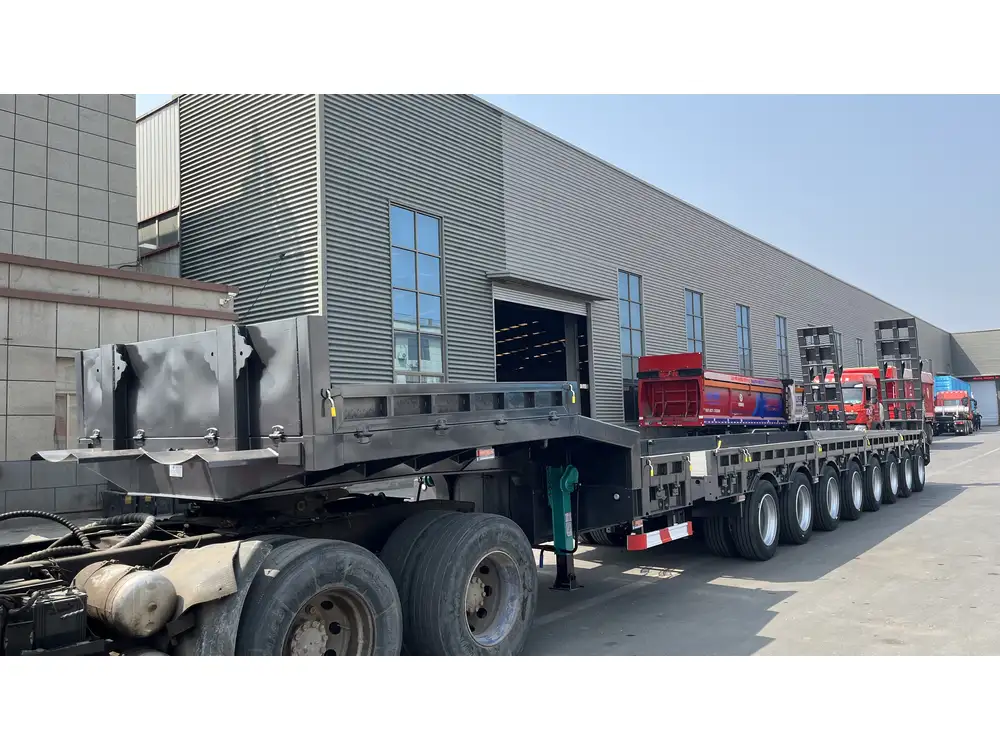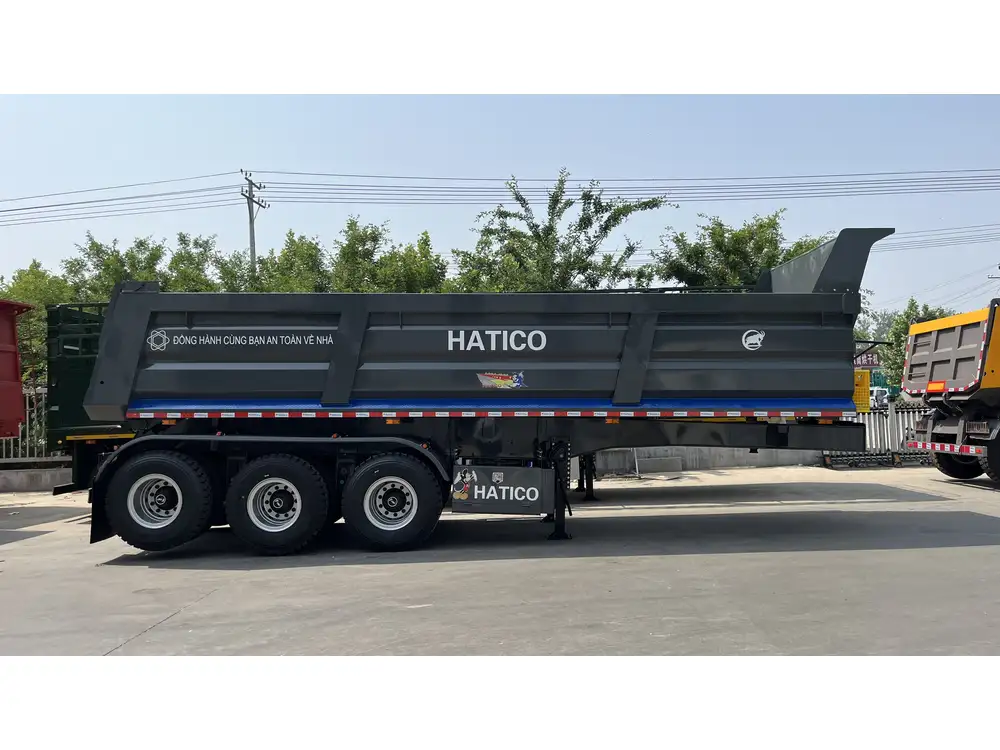The Origins of “Semi” in Semi-Trailer Terminology
When venturing into the arena of trucking and logistics, we frequently encounter the term “semi-trailer.” This phrase, while straightforward at first glance, contains a rich tapestry of history and technical specificity. The “semi” portion derives from its design; this type of trailer is only “semi” complete, lacking the front axle assembly that fully-fledged trailers possess. It is dependent on a tractor unit to function effectively. Understanding this fundamental aspect enables us to appreciate the engineering marvels that semi-trailers represent in today’s freight transportation landscape.
Clarifying the Structural Design of Semi-Trailers
Unlike traditional trailers that possess their own axles, semi-trailers employ a unique design that includes a coupling mechanism known as a fifth wheel, which connects it to the towing vehicle. This structural design not only enhances maneuverability but also optimizes load distribution and weight management. Here’s a breakdown of the components involved:
| Component | Description |
|---|---|
| Fifth Wheel Coupling | A pivot point for attachment to the tractor, allowing for sharp turns and smooth rides. |
| Kingpin | The pin housed in the trailer’s goose neck; it secures the trailer to the tractor. |
| Load Deck | The flat surface area that bears the cargo, often equipped with side rails for safety. |
| Axles | Typically two or three, located toward the rear, ensuring load stability and support. |
This design allows semi-trailers to transfer substantial loads while navigating tight roads and urban environments, which would be problematic for trailers that lack this engineered flexibility.

The Role of Semi-Trailers in Modern Freight Transport
In aligning with industrial demands, semi-trailers have emerged as the backbone of long-haul logistics. Their adaptability and efficiency have relegated older transportation methods into obsolescence. Here, we will dissect several key aspects of their functionality.
Benefits of Using Semi-Trailers
- Enhanced Load Capacity: Semi-trailers can accommodate larger volumes compared to standard trailers, optimizing payload efficiency.
- Improved Fuel Efficiency: The aerodynamic design minimizes drag, resulting in better mileage, thereby reducing operational costs.
- Versatile Configurations: From flatbeds to refrigerated trailers, their customizable designs cater to a multitude of industries, from agriculture to pharmaceuticals.
- Ease of Loading and Unloading: The design facilitates straightforward access for loading machinery, forklifts, or manual labor, streamlining operations.
Comparisons with Other Trailer Types
| Type of Trailer | Key Characteristics | Use Cases |
|---|---|---|
| Semi-Trailer | Axle-less front; reliant on the tractor for support; versatile configurations | Long-haul freight; diverse cargo types |
| Flatbed Trailer | Open design; easy loading; no sides or roof | Construction equipment; oversized loads |
| Enclosed Trailer | Fully enclosed; protects cargo from elements | Sensitive goods like electronics or machinery |
| Tanker Trailer | Positioned for liquids; specialized design and materials | Fuel, chemical transport |
This granular understanding of various trailer types serves to underline semi-trailers’ unique advantages in logistics operations.

Why Are They Paramount in the Transportation Sector?
As industries evolve, so does the necessity for more efficient, faster, and reliable transportation methods. Semi-trailers have risen to this challenge, leading to a backlog of advantages that support this assertion.
Key Factors for Their Prevalence
- Regulatory Compliance: Semi-trailers often adhere to strict size and weight regulations, thus ensuring they can operate legally across various states and countries.
- Technological Advancements: With integrated technologies such as GPS tracking, telematics, and temperature control systems, semi-trailers are at the forefront of a more connected transportation infrastructure.
- Safety Features: Modern semi-trailers come equipped with advanced braking systems, reflective materials, and improved structural integrity, which mitigates risks on the road.
- Scalability: Businesses can easily scale their logistics capabilities by investing in a fleet of semi-trailers rather than encompassing a variety of trailer types.
User Queries: Exploring Important Questions
Users navigating the logistics and trucking industries often have specific questions regarding semi-trailers. Let’s explore some of the notable queries and delve into the answers.

What Makes Semi-Trailers Different from Conventional Trailers?
The primary difference lies in the lack of a front axle on semi-trailers, which necessitates a tractor for movement. This engineering choice allows semi-trailers to distribute weight more efficiently over their axles and provides greater maneuverability. This design complexity offers heightened adaptability to various cargo characteristics, thereby supporting diverse logistics needs.
How Do Load Weight Restrictions Affect Semi-Trailers?
Regulations in North America—particularly, the Federal Motor Carrier Safety Administration (FMCSA)—place strict limits on weight. A common legal freight weight for a combination of a tractor and semi-trailer is 80,000 pounds. Business owners and logistics managers must account for these limits to prevent penalties and overloads, which can lead to accidents or illegal operational status.
What Types of Cargo Are Best Suited for Semi-Trailers?
The versatility of semi-trailers allows for a diverse range of cargo types, including:
- General Freight: Palletized goods, consumer products, and retail supplies.
- Automotive Parts: Components that require secure, stable transportation.
- Heavy Machinery: Construction and agricultural equipment.
- Food Products: Temperature-sensitive items transported via refrigerated semi-trailers.
This repertoire highlights semi-trailers’ capability to adapt to varying industrial needs seamlessly.

Comprehensive Overview of Semi-Trailer Types
Given their vast compatibility, understanding the differing varieties available helps in making well-informed purchasing decisions. Below, we delve into popular semi-truck trailer types use.
1. Standard Dry Van Trailers
These enclosed trailers provide solid structural integrity which protects goods from environmental factors. Primarily used for non-perishable items, their design ensures excellent cargo security.
2. Refrigerated Trailers (Reefers)
Equipped with climate control systems, these trailers are made for transporting perishable goods requiring temperature regulation. This has made them indispensable in the food supply chain.

3. Flatbed Trailers
Ideal for transporting oversized and heavy items, flatbed trailers lack sides and roofs. Their open design allows for easy loading and unloading from various angles.
4. Curtainsider Trailers
A hybrid of the dry van and flatbed, curtainsider trailers come with flexible side curtains. They offer easy access for loading and unloading, especially suited for building materials and palletized goods.
5. Tanker Trailers
Designed for liquid transport, these trailers come with a specialized construction for handling fuels, chemicals, and food-grade liquids. Their structural integrity ensures safety and compliance with regulatory standards.

6. Auto Transport Trailers
Specifically engineered for transporting vehicles, these trailers often include multi-level platforms optimized for space maximization.
Table: Comparison of Different Semi-Trailer Types
| Trailer Type | Design | Cargo Suitability | Key Features |
|---|---|---|---|
| Standard Dry Van | Enclosed | General freight | Security, weather protection |
| Refrigerated (Reefer) | Enclosed with refrigeration | Temperature-sensitive goods | Climate control, insulation |
| Flatbed | Open | Oversized materials | Versatility in loading/unloading |
| Curtainsider | Flexible sides | Varied cargo | Easy access for loading/unloading |
| Tanker | Specialized rounded | Liquids | Safety for hazardous materials |
| Auto Transport | Multi-level platforms | Vehicles | Efficient space use |
Enhancing Your Business with the Right Semi-Trailer
Choosing the correct semi-trailer type fundamentally impacts operational efficiency, fleet management, and ultimately, profitability. Businesses should conduct a thorough review of their specific requirements and operational goals before investing.

Actionable Steps in Selecting the Right Semi-Trailer
- Assess Cargo Needs: Understand the types and weights of loads typically transported.
- Regulatory Awareness: Stay updated on transportation regulations related to size and weight limits.
- Budget Consideration: Factor in initial investment, maintenance, and operational costs.
- Future Growth: Choose versatile options that can adapt to business operations over time.
- Consult Experts: Engage with trailer manufacturers or logistics consultants to identify the best choices fitting your needs.
Conclusion: The Indispensable Nature of Semi-Trailers
In the expansive world of logistics and heavy-duty transportation, semi-trailers occupy a position of paramount importance. Their unique design, structural advantages, and intricate functionalities enable them to play a critical role in efficiently moving freight across various terrains and distances. As industries continue to evolve, the demand for adaptable and reliable transport solutions like semi-trailers is bound to surge, solidifying their relevance in the dynamic transportation landscape. By making informed choices regarding semi-trailer types and operational strategies, businesses can position themselves advantageously within a competitive market, ultimately driving growth and success in their logistics endeavors.



